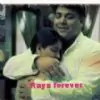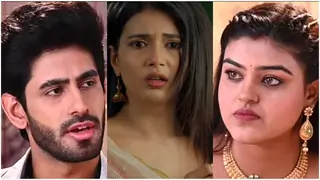Crime Patrol is Hugely Appreciated here...
LINK:http://www.fwa.co.in/SitePages/CrimePatrol-TV-Review.aspx
CRIME PATROL – BABY TARA CASE – REVIEW
A few weeks ago the impossible happened in telly land. For over a decade now fiction television has been dominated, nay monopolised nay almost totally owned by soaps. Kitchen politics, saas-bahu strife, over decked up women sporting a few kgs of jewellery even while prancing (I was going to use sweating but our heroines never sweat unlike the real women they claim to represent and emulate) in the kitchen, concocting kheer and koftas – regressive TV has ruled the airwaves. Save for the occasional India Pakistan cricket match or the rare occasion when someone wins a crore on national TV, the ratings have remained with the soap queens. Until now when defying all odds and the time tested logic of the TV channel honchos, a crime show and a docu drama at that, with no gloss, no jewellery, no kheer, no romance – pretty much none of the ingredients that programming heads swear by, trumped every other show in the country to become no. 1. And it wasn't just a stray occurrence cause it repeated its feat the following week and since then has managed to stick around in the top 5.
The show is Crime Patrol – Dastak that plays on Sony Entertainment Television, Fridays and Saturdays at 11 PM. The episodes in questions were what they called Baby Tara – a recreation of the shocking Baby Falak case that had traumatised the nation early this year – the sordid tale of a two year old baby who was brought to Delhi's AIMS hospital with multiple injuries - her face had been bitten, her head had repeatedly been smashed into a wall, and her chest showed burn marks from a hot clothes iron. Her assailant – a young teen who herself was a victim of abuse and trafficking. For weeks on end the newspapers played up this story bringing to light a horrifying web of human trafficking, exploitation and abject cruelty.
Doesn't quite sound like the stuff that makes for delightful family viewing. If anything this is a channel head's worst nightmare. If this kind of edgy, gritty, real stuff appeals to audiences then the very foundations that all programming strategies are built might well be shaken and dismantled. That may or not happen in the near future but what's worth studying is what was so fantastic about this show and these episodes that they managed to overturn the entire existing scheme of things.
Story-screenplay writer Subbu (Subramanian S. Writer) and dialogue writer Charudutt Acharya had a daunting task ahead of them – how to take such a depressing, tragic almost unwatchable tale and make it gripping, riveting. As someone who couldn't take his eyes off the screen for even a second – I can testify that they did in fact succeed.
How? That's the million dollar question or in this case 6 point rating question.
For starters what works brilliantly is the structure. Completely eschewing the linear approach, the writers have gone for a fractured time approach – the story beginning with the child being brought to the hospital and then going back in time to reveal the course of events that led to this tragedy. And the device the writers use with brilliant effect is the police investigation into the identity of the baby and the events that led to this crime. Following this investigation on one hand the story breaks into flashbacks as the police unearth every new piece of the puzzle. Thus it retains the best facets of the procedural, investigative thriller while also creating solid emotional, dramatic moments that any good drama writer would kill to have authored. And to pack an emotional wallop the entire investigation and recreation of the past are intercut with the desperate endeavour of the doctors of AIMS to save the baby and a collective nation's emotional outburst in the form of marches, prayers, candle light vigils and what have you.
The advantage of this structuring is that the writers achieve pace that keeps the viewer glued to the screen at the same time shocking us with the sordid realities of human trafficking and exploitation of women but also never letting the material get so grim or depressing that we want to run away by keeping a flicker of hope and optimism burning courtesy the depiction of the determination, commitment and passion of the doctors and the cops involved. Every time we feel miserable and angry by the heinous acts committed by someone, in moments there is a cathartic dishing out of justice as the police catch up with them and give them what they deserve. At the same time the key villains and the most dramatic suspenseful points of the narrative – will the baby be saved, will the cops be able to find and rescue the mother, will the other two kids be found and reunited with the mother – these are kept going till almost the very end. The writers have deftly wound the storytelling in such a manner as to play with the viewers' emotions, shock them, make them cry and then uplift them, give them a sense of righteous justice, then again bring in tension and anger, keep them on the edge of their seats praying for the baby to survive, for the criminals to be punished, for succour to find its way to the victims. This is their biggest achievement.
The other laudable aspect of the writing is its crispness. In a universe where audiences are belaboured with never ending verbose scenes that sometimes carry on for over half the running length of an episode, this show and these episodes in particular eschew that kind of writing totally. The scenes are short, to the point, pruned and polished for maximum impact, they do their job admirably but don't linger on. The same is true of the dialogues – they are real, punchy and never overdone. There are points however where the anchor's narration gets a tad stretched and flowery but in the larger scheme of things that's a minor blot that can be forgiven. Especially since most of what the anchor is made to say also has a strong impact in searing the audience's consciences, stoking their anger, building up their sympathy and concern and once again keeping them hooked.
Something else that's quite awesome, especially considering that it's usually absent even in a lot of Indian movies is the way the writers have attempted to tell the story visually. Sure some of these could have been directorial decisions, but a lot also seem to have been scripted beforehand. At all points in the show, an attempt is made to build atmosphere by actual visuals of the places the story takes us to be it the Mumbai suburbs or the lower middle class tenements of Dwarka or the dusty desert villages of Rajasthan. This goes a long way in taking us into the world of the story and making it so much more real which is what ultimately makes it hit us so hard. A good lesson here for soap makers where everything from the actors to the houses look 'cardboardy' and fake. Also the strongest points (for which one will have to bestow kudos on the director as well) are made through compelling visuals – a bird in a cage, a cherubic smile on a tot's face that cuts devastatingly to a shot of the same child battling for life in a hospital bed...
Mention must be made of the exhaustive research that must be going into the making of this show – it's bang on, nothing seems fake or concocted, it's like we, the audience are right up there watching reality play out in front of our eyes. Kudos to SarveshUpadhyay (researcher).
Put simply be it the writing, the directing, the casting (most of the characters seem like real people not actors), the anchoring and acting, the lighting and the camerawork, the choice of locations – everything has been used to tell the story effectively. What more can one ask for? The show justifiably deserves its rating and one can only hope more shows strive to stretch the boundaries or writing, shooting and storytelling so that Indian Television steps out of the dark ages it's been languishing in for a pretty long time now.
We are proud of you Crime Patrol.




























